At Bukujju Umea Primary School in Bukujju, Kayunga district, the mid-morning bell goes to the thrill of its struggling learner population.
According to the school Deputy Headteacher, Hadijah Tempora, this only government-aided primary school in the parish of Bukujju has a total enrollment of close to 500 children. However, only about 300 are able to make it to class every day.
“The rest of the children are always absent and for different reasons … something has to be done about this absenteeism,” Tempora explains.
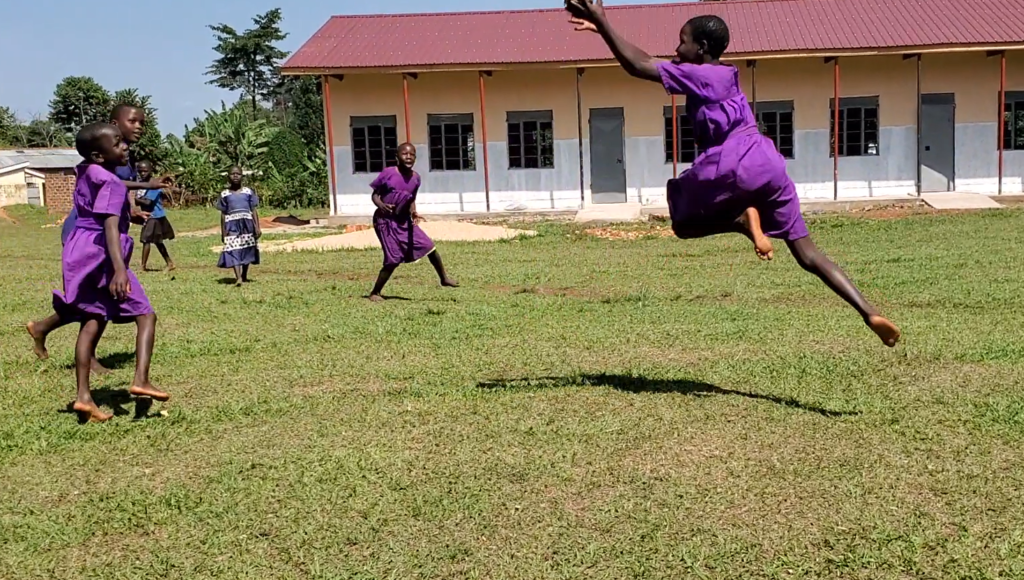
Schoolgirls play during a mid-morning break at Bukujju Umea Primary School in Kayunga District. Photo by Richard Mugambe.
Bukujju Umea is Islamic-founded, and run by government teachers with the support from Teaching Fellows from Teach For Uganda, a non-profit organization which equips young professionals with pedagogical skills and deploys them in education-needy communities to improve learning outcomes.
Together, the two teams are fusing technology and grassroot approaches which involve learners, the community leadership and parents to mitigate the seemingly habitual absenteeism.
They are using a mobile digital application called Skizaa, built by teachers for teachers to track children attendance. The application provides real-time information on absent children, from which the teachers are able to act upon.
According to its developers, this application specializes in collecting and analyzing education data, particularly in last mile regions of Uganda like Bukujju.
“We love to term it as ‘Data Dark Areas’ where data collection is mostly paper based and you don’t get this data in real time … this data is collected in real time and directed straight to other stakeholders who can use it immediately,” says Dinah Achola, the Customer Success Manager at Skizaa.
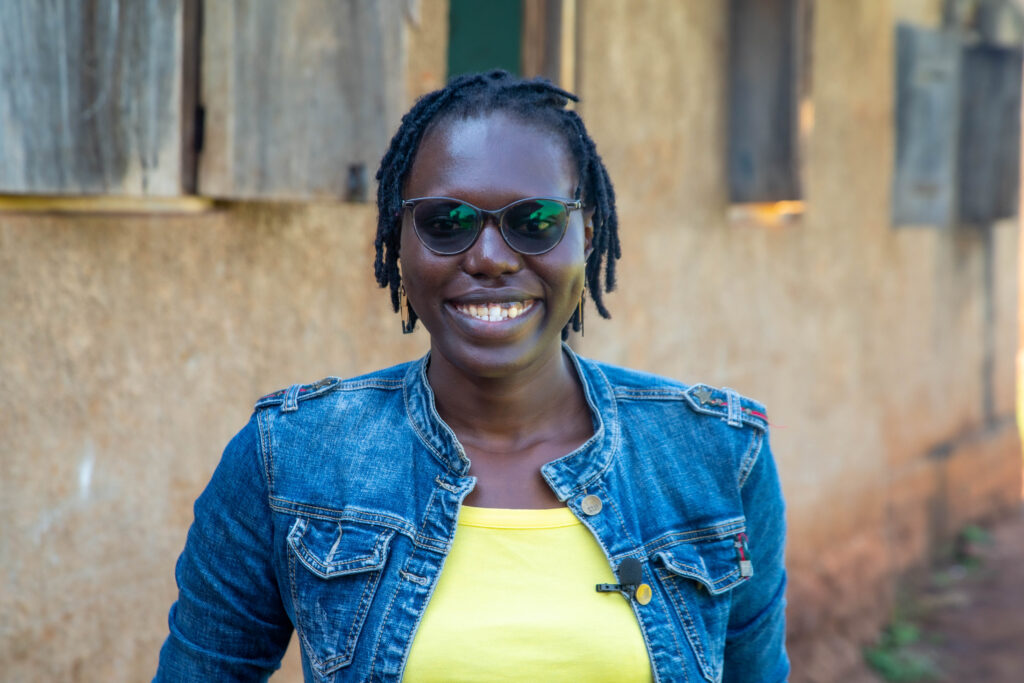
Dinah Achola, a passionate Educationist and Customer Success Manager at Skizaa, a digital innovation helping teachers at Bukujju Umea Primary School to track learner attendance in real-time. PHOTO by Richard Mugambe.
Achola, a graduate of Business Computing but a passionate educationist says Skizaa was conceived from firsthand experience as a Teaching Fellow at Kigandaalo Church of Uganda Primary school in Mayuge district, East of the country.
While there, with a class of 250 learners, she could only account for about 100 everyday.
“I literally had an idea of things happening to about 100 of my students. The rest, I didn’t. So, with my ICT background, I figured out a way of having a solution in the classroom, an application that works with teachers and they can use it to track their learners’ attendance,” Achola explains.
Skizaa works both online and offline. It is installed on a teacher’s phone, and allows them to enter student attendance data into a backend system for the school everyday.
While in class, they are able to mark those in attendance. The system on the other end will alert the teacher and the school administrators on the absent children in real time.
“With this information, we are able to make home visits to understand the cause of the missing child. Where necessary, we advise parents on how they should handle home situations that are stopping the children from coming to school,” Tempora says.
According to Achola, the data collected is provided to different stakeholders like NGOs, curriculum developers, and policy makers with valuable insights for informed decision-making and enhanced education outcomes.
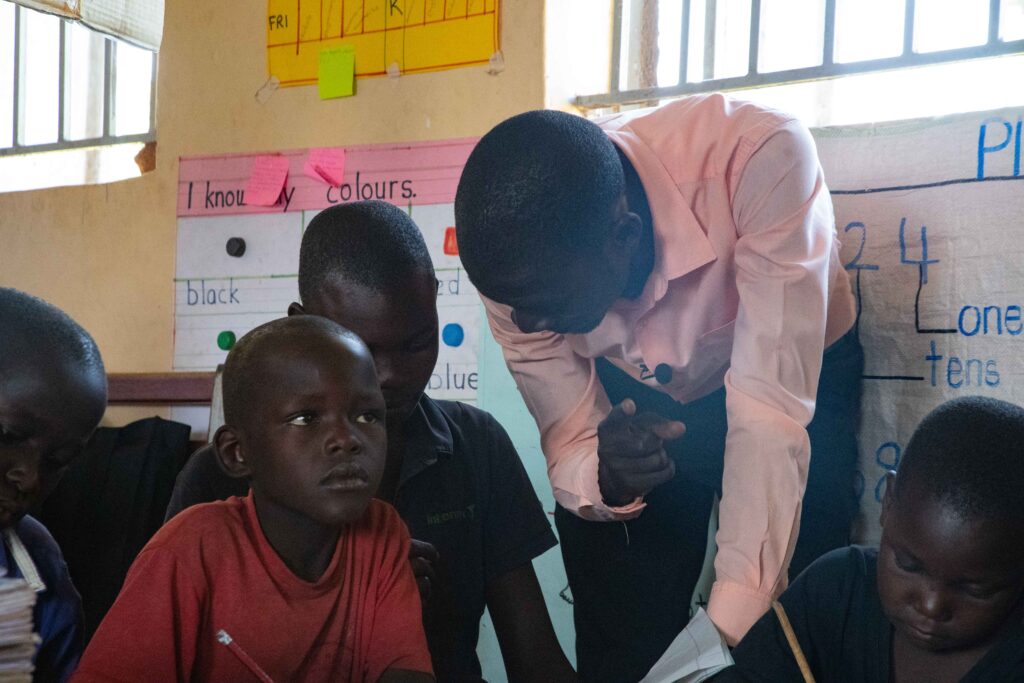
Teacher Yusuf Kasakya attends to a learner in the Primary Two class at Bukujju Umea Primary School during a Numeracy lesson. PHOTO by Richard Mugambe
In 1996, the government of Uganda introduced Universal Primary Education (UPE), raising enrolment levels to about 7.6 million children. However, the program has faced retention challenges.
A seven-year analysis by the Uganda National Examinations Board (UNEB) notes that 1.2 million children out of about two million who start primary one drop out before writing the Primary Leaving Examinations (PLE).
For example, the same research showed that 1.9 million children enrolled in primary school in government-aided schools in rural communities in 2015. By 2016, this number had reduced to 1.3 million children in primary two.
While statistics show enrollment stability in primary two up to primary four, it shows a sharp decline at primary five toward primary seven, lowering the number of PLE candidates.
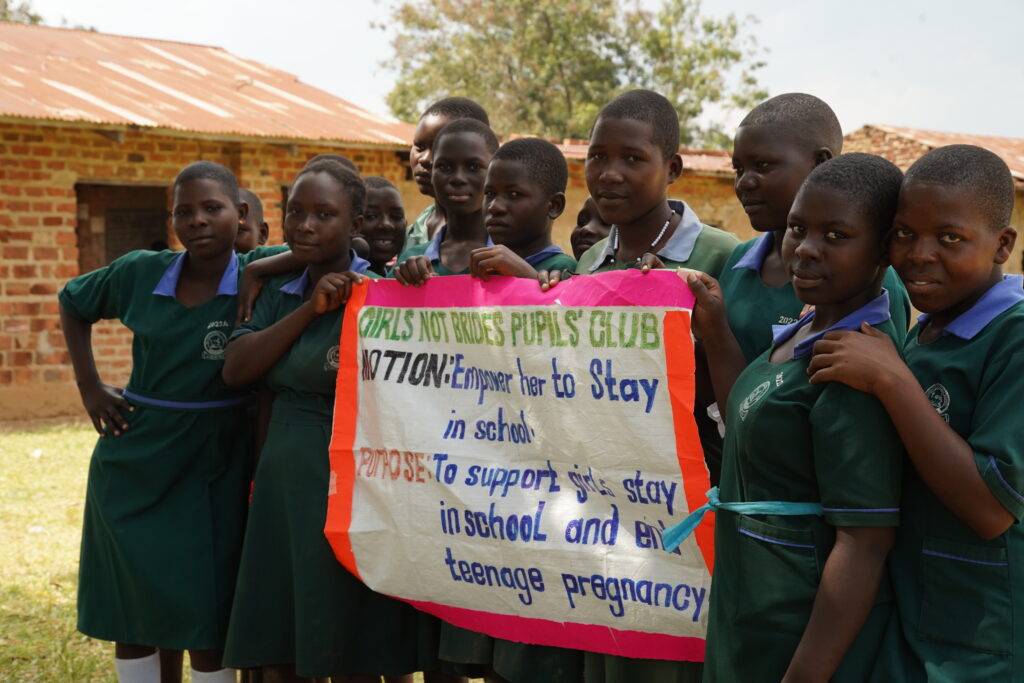
From the Archive. Schoolgirls in the “Girls Not Brides” Club carry a Stay-in-School campaign placard at Kigandalo Church of Uganda Primary School in Mayuge District. PHOTO by Richard Mugambe.
At Bukujju, teacher Yusuf Kasakya, has been principal in following up absent children in his primary two classes. Kasakya conducts home visits and interacts with parents to understand the depth of their challenges.
“I engage in a conversation with parents because they are the ones who rule on children’s decisions whether to attend school or not. And by the time we leave, we lay down strategies on how to support the child,” he intimates.
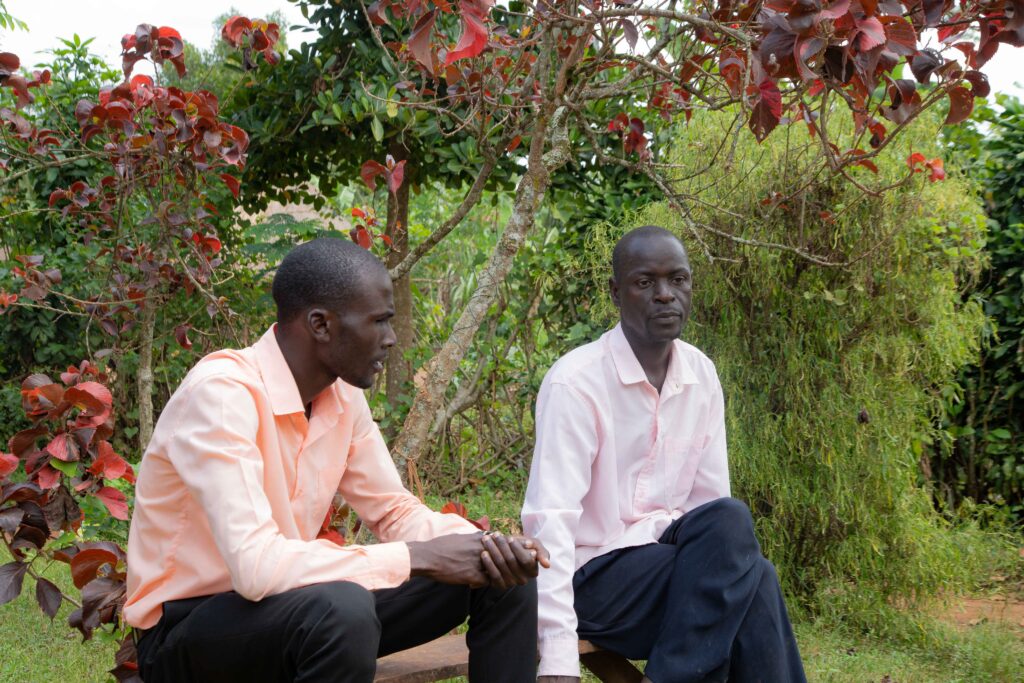
Teacher Yusuf Kasakya pictured in conversation with a parent as he visited the home of a missing learner. PHOTO by Richard Mugambe.
-Negotiating against the old-school rollcall-
At its inception, Skizaa’s unique value proportion was the usage of facial recognition, whereupon teachers would pass the phone around the classroom to take a record of children’s faces, and automatically record their presence.
However, innovators were held back by the absence of a data protection legal framework that protects children’s privacy while enabling the collection of such data for public interest use.
Achola notes that wherever they have sold the idea, the promise has been about their ability to put in place data protection measures to meet internationally acceptable data protection measures standards as they continue to lobby for the facial recognition feature.
“We do not share this data with any other entity or any other person who is not supposed to use that data.”
Skizaa not only tracks attendance but collects other child-development analytics that helps teachers to give direction to children beyond classwork.
“So we put in all these details to enable the teacher to track each child’s individual ability and to also follow up closely to ensure that this ability is being nurtured and is being followed up closely and even the parents are aware of it and are able to follow up collectively,” she explains.
As teachers at Bukujju struggle to raise numbers in classrooms, the retention rates will depend on the ability of the community, leadership, and other stakeholders to merge efforts.
Recent News
© 2022 - Media Challenge Initiative | All Rights Reserved .


